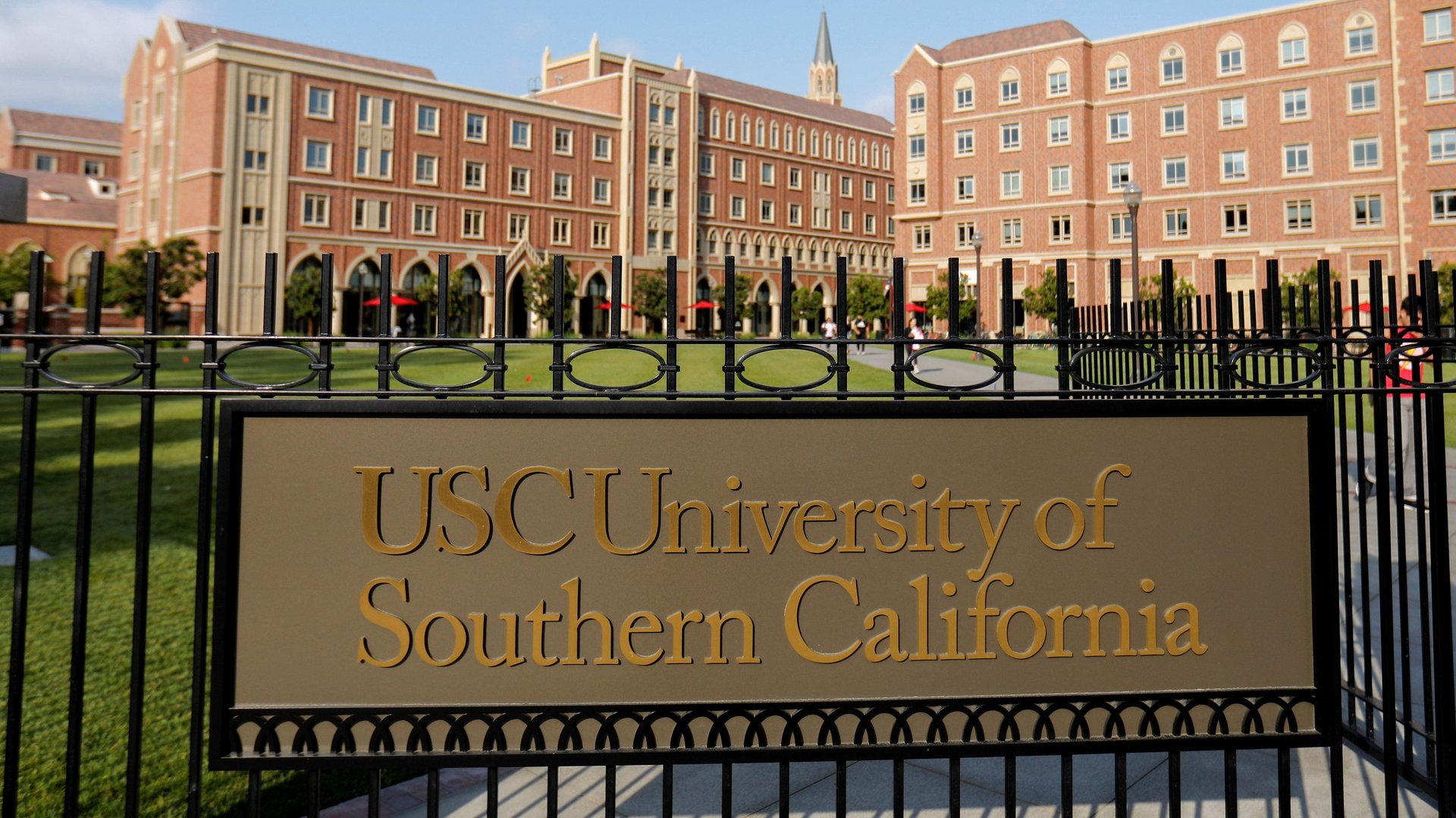What parents bought with bribery at elite colleges wasn’t education. It was brand recognition
The college admissions scandal that broke on March 12 put a blaring spotlight on the sometimes absurd lengths parents will go to get their kids into elite universities. Altogether 50 people were charged in a scam that involved school administrators, college athletic coaches, and wealthy parents accused of shelling out bribes that could add up to over $1 million.


The college admissions scandal that broke on March 12 put a blaring spotlight on the sometimes absurd lengths parents will go to get their kids into elite universities. Altogether 50 people were charged in a scam that involved school administrators, college athletic coaches, and wealthy parents accused of shelling out bribes that could add up to over $1 million.
Education is critically important to a child’s long-term well-being. The alleged actions of these anxious, overly involved parents to get their kids the best schooling possible were arguably well-meaning, if morally corrupt. Except education isn’t really what was at stake here. What those parents were buying their kids was brand recognition.
A brand-name education is basically a luxury good at this point in the way it reflects a level of status and cultural capital. In her 2017 book, The Sum of Small Things: A Theory of the Aspirational Class, sociologist Elizabeth Currid-Halkett examined the shifting markers that define and communicate status in the US. In the past, the wealthy used publicly visible luxury goods to show off their rank—the “conspicuous consumption” economist and sociologist Thorstein Veblen identified in his classic, The Theory of the Leisure Class. But times have changed. Currid-Halkett argued that globalization and advances in technology have made these sorts of goods much more accessible to the average American, diminishing their appeal as status symbols.
“So instead of spending money on consumer products, Currid-Halkett finds that the rich increasingly focus their spending on ‘nonvisible, highly expensive goods and services’ that allow them to have time to gain that social capital and foster it in their children,” wrote Quartz’s Dan Kopf. “Such goods and services include child care, gardeners, and, most importantly, education.”
Tellingly, several of the schools that have been caught up in the scandal are brand names that convey the sort of cultural capital Currid-Halkett described, including Yale University, Stanford University, and the University of Southern California. (Currid-Halkett, who is a professor at USC, has not commented on the admissions scandal.) Schools such as Wake Forest University and University of Texas that were also named may have a little less brand cachet, but are still widely recognized, well-regarded names.
These schools are prestigious largely because they’re seen as offering a top-notch education. Theoretically that’s what the parents were allegedly buying into, except that the link between a school’s prestige and the education a student gets there is tenuous at best, as Quartz’s Jenny Anderson recently pointed out. She cites the work of a researcher from Stanford itself, who found that learning had little to do with the school’s ranking. “It appears that what students do in college is far more important than the type of institution they attend,” the research said.
Olivia Jade Giannulli has become a lightning rod in the scandal. She’s the daughter of actress Lori Loughlin and designer Mossimo Giannulli, both charged in the bust by federal prosecutors. It’s not clear whether Giannulli knew about the $500,000 in bribes her parents stand accused of paying to boost her and her sister’s chances of getting into USC. But she’s attracted attention because her primary focus appears to be on her budding career as an influencer, not on her education.
“I don’t know how much of school I’m going to attend,” she said in a YouTube video posted in August 2018. “But I do want the experience of game days, partying. I don’t really care about school, as you guys all know.” (She followed that video with one apologizing a few days later.)
Once at brand USC, she used the opportunity to create Instagram content for her paid partnership with Amazon, showing off her well-appointed dorm room—and to many, making for a conveniently pointed example of how privilege works in the US.
Money, of course, has always bought access to elite colleges. Sometimes it comes in other forms, such as large donations. The admissions scandal is just a particularly egregious example, as well as another reminder of the inequality that exists in the US education system. The Brookings Institution, a non-profit public policy organization, has noted that an educational divide has opened up between high-income and low-income families, creating a gap in the form of test scores, college attendance, and graduation rates. Fueling the divergence is the fact that wealthy Americans are investing more in their kids’ educations. They also tend to dominate enrollment at America’s “selective” universities.
It’s the same trend Currid-Halkett framed as a form of status seeking. (She also reached the conclusion in her book that it increases inequality.) For the parents, it enables them to give their kids the immensely valuable cultural capital of a branded education, and helps them to preserve that all-important commodity: status.